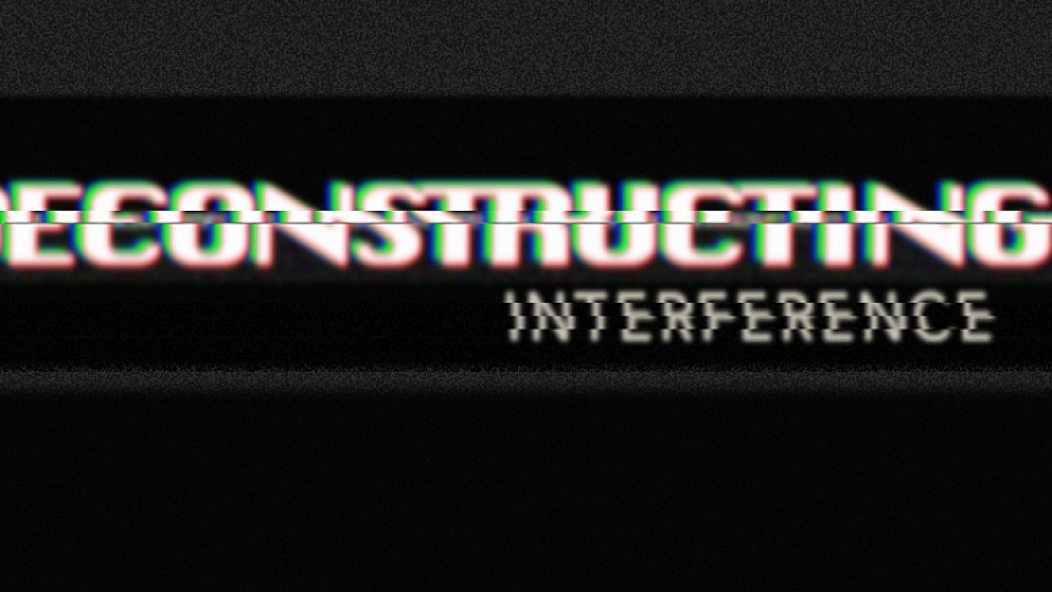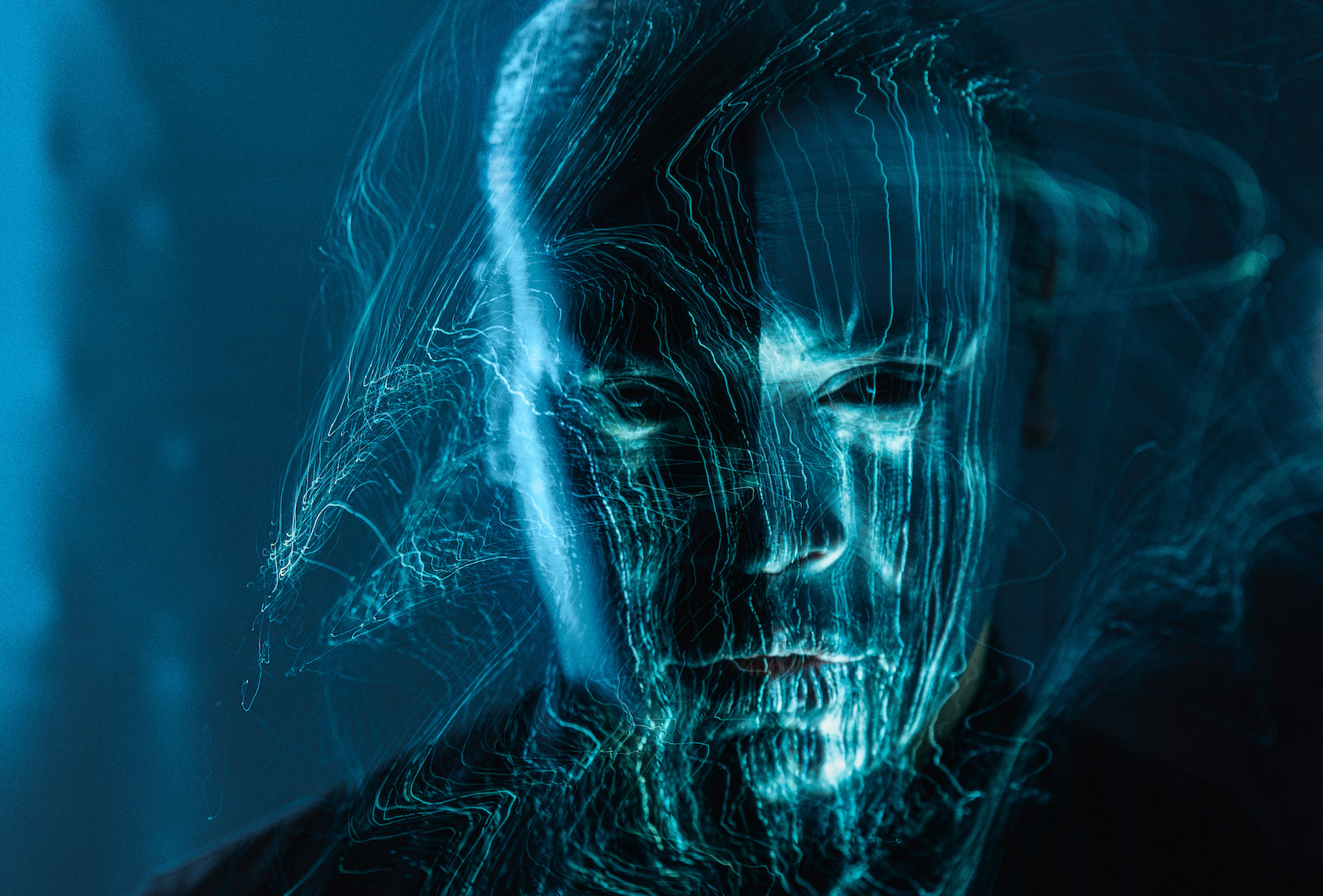
Deconstructing Interference #16

…
We lost a truly great one last month. Scott Walker unfortunately passed away on March 22nd, and it is impossible to not look back at the artist’s history. What made Walker so unique was the amount of ground that he covered through his career: starting back in the 1960s, he was a mainstream figure, releasing works with The Walker Brothers and as a solo artist. Baroque pop and soul, adding a bit of country… this seemed to be Walker’s bread and butter and what he would forever be known for. But, when the Walker Brothers came back together and released Nite Flights, I can only imagine the surprise of their fans when a track like “The Electrician” came up. It was something so different from what they must have expected, with Walker moving to a distinctly darker territory and exploring a completely different world, as the minimal instrumentation and obscure atmosphere set in. Even though he kept some of the progression and groove of mainstream music, there was something undeniably more dissonant and off-kilter about it. And it was not only the structures of the music, but also the lyrical perspective, with Walker using a CIA torturer as his protagonist.
It seems like a switch was flipped, and Walker would continue to explore this new world in his subsequent solo releases. Starting off in 1995 with Tilt, it appeared like Walker’s transformation was all but complete. His baritone voice would now would sit on top of art rock structures and enrich avant-garde ideas. Minimal settings and dissonant notions, repetitive drumming and sudden changes would all find their place in Tilt. And yet, it was his next release that saw Walker reach the absolute peak. The Drift can arguably be considered one of the darkest records ever to be produced, a work of constant pressure and movement. Sound design, sonic collage, dark ambient, and industrial were masterfully weaved together to produce a seminal work. Concluding the trilogy with Bish Bosch, a record comprised of the same DNA as The Drift, albeit not featuring the same oppressive streak, Walker would continue working on film scores and would also collaborate with the great Sunn O))).
What should be taken home from Walker’s musical path is his ability to evolve. Walker did not remain static, refusing to stay put within the mainstream sound and instead reached for something more ambitious. And because of that he thrived. Still, I would like to think that there were always slight hints in his early music — I mean, how can it not get dark when you are narrating the plot from an Ingmar Bergman film? As much as I enjoy listening to “The Seventh Seal,” I think it is “Clara” where he showcased his best. His innovation, scope, and creativity will be sorely missed, but he has planted seeds that will carry on for generations.
…
Mopcut — Accelerated Frames of Reference
March 8, 2019
Mopcut finds three distinguished members of the experimental and improvisational scenes coming together to unleash a work of true chaos. Lukas Konig, known from Koenigleopold and Kompost 3, leads this hyper-rhythmic assault from behind the drumkit. He is joined by guitarist extraordinaire and Fire! Orchestra member Julien Desprez, who arrives with both maniacal renditions of instrument exploration and minimalistic sound scape craftsmanship. Rounding up this magnificent company is vocalist/cellist Audrey Chen, who leaves behind the cello and instead dives into a no-holds-barred investigation of the human voice and its capabilities.
What defines Mopcut is the tendency to rapidly change perspective. Introducing their debut record Accelerated Frames of Reference with the seven-minute long opus “Fictitious Forces,” it is glorious to behold how they are able to switch from frantic, free-jazz-inspired outbursts to minimal, psych-induced overtures. For Mopcut, the duality of maximalism and minimalism has a common point of origin, and that is exactly what they explore. All three members embrace this schism and deliver both energetic explosions filled with extreme noise and complex progressions, but also tribalistic introspection with a dose of spirituality. Kronig, Desprez, and Chen are able to produce a Janus-like record, one that fully embraces its bifurcations.
…
Tony Buck + Massimo Pupillo — Time Being + Unseen
March 29, 2019
This is a collaboration for the ages. Tony Buck, drummer of Australian experimental jazz act The Necks, meets Massimo Pupillo, bassist of Italian extravagant transformative band Zu. The two musicians, guided by their mutual love for improvisational and ambient music, dive into an immersive sonic journey that resulted in two albums, Time Being and Unseen, released in LP and CD format respectively.
Time Being sees the electronics of Pupillo take the lead in “Strange Luminant” before the subtle percussion of Buck joins in, augmenting the dimensionality of the atmosphere with an array of haunting sonic artifacts. Feedback and drones dictate the world of Time Being, but Unseen sees the duo return with a less elusive form. “Psithurism” finds Buck taking the lead with his drum kit slowly crafting the ceremonial progression of the track, beginning a 22-minute long ascent that implodes when Pupillo joins in with his towering bass. The final chapter to Unseen is the most daunting moment of this collaboration as Buck and Pupillo commence on a 45-minute adventure with “Entrainment,” navigating through minimalistic soundscapes and meticulous sonic craftsmanship. Both Time Being and Unseen have their foundation on the exploratory mindset of Pupillo and Buck; with these two works, they showcase how improvisation can lead to a hypnotic piece of art.
…
Fennesz — Agora
March 29, 2019
In 1988, a band named Maische spawned into the Austrian underground scene, producing a strange but exciting style of art-rock. Even though Maische would disband a few years later, their vocalist/guitarist would carry on and become one of the central figures in a very different scene. That was the origin of Christian Fennesz, who after the breakup of his band began traversing the experimental, ambient domain. Fennesz journey was documented through seminal works, in his debut Hotel Paral.lel and Endless Summer, as well as his numerous collaboration with stellar musicians like Jim O’Rourke, Oren Ambarchi, Mika Vainio, and Kevin Drumm.
In recent years, Fennesz has dedicated most of his energy working with experimental fellow travelers like King Midas Sound and Ozmotic, which resulted five-year gap in the artist’s solo discography. His new album, Agora, was recorded with minimal gear in a small bedroom and was produced on headphones, something that Fennesz has not done since the 1990s. But, through this process, it seems like the producer was able to reconnect with his center, crafting a record with a stronger ambiance and a controlled outlook. Through long-form compositions, Fennesz applies pressure with dissonant and piercing synths, but also indulges on a soothing and laid back tonality. It is this sense of balance that makes Agora feel like a clinic on how to structure and produce ambient works.
…
My Disco — Environment
February 26, 2019
My Disco is a chameleonic act. The band from Australia started their sonic journey with a math-rock basis that leaned toward a notion of avant-gardism. Their third work Little Joy saw them mutate for the first time, taking on post-rock aesthetics and adding an ethereal twist to their rock demeanor. However, their 2015 album Severe found them completely unraveled, like a serpent shedding its skin, embracing alienated concepts ranging from doom metal and post-punk all the way to noise.
Their latest record Environment surpasses all the previous transformations of My Disco. The band wrote the new record in Berlin, at a place were iconoclastic artists like Einsturzende Neubauten, Keiji Haino, and Pan Sonic have produced some of their finest music. The result is a record that is harsh and minimal, relying almost entirely on sound design to drive its cold edge. The noise pulses of “An Intimate Conflict” introduce this bitter story, followed by the minimal synth progressions of “Exercise in Sacrifice.” The descent into the abyss continues through overwhelming feedback, big soundscapes, mantra-like vocal repetitions, all collaged masterfully to create this terrifying dark cloud of a record. Severe might have been a dark turn for My Disco, but Environment feels like a perfect eclipse, a record that realizes the deconstructionist vision of the band.
…
Recent Arts — Skin
March 8, 2019
Recent Arts is a bridge between the visual and the aural. Chilean visual artist Valentina Berthelon has been roaming into the audio dimension both through record design, for acts like Modelo Espacial and Monomachine, but also through her multimedia collaboration with Lineas De Nazca. On the other hand, Tobias Freund is an acclaimed German musician best known from his participation in the astounding tribal/noise/electronic collective Hypnobeat. As Recent Arts, these two creative forces focus on audiovisual performances that encompass the full range of electronic music, from its experimental end to its mainstream leaning. Their 2016 debut record showcased that fact, but their return with Skin finds them producing a much richer work.
Skin finds the duo collaborating with singer Barbie Williams in what seems to be an immersive and haunting performance. When listening back to the record, the visual world that Berthelon has created might be absent, but it feels like Freund has been able to preserve his collaborator’s vision through his sonic experimentation. “Surface” sees Barbie Williams masterfully fill the dark soundscapes with her magnificent voice, while Freund lays down a minimal, noir inspired scenery. From that point on, Skin displays a fluid narrative, transforming from the tribal feel of “Movements & Codes” to a dark and industrial presence in “Falling.” Experimental ideas arise in their noisy form through “Natural Cause” while the dark ambient essence shines in the minimal approach of “Skinscapes” and “Latex.”
…
Pfirter — The Empty Space
March 8, 2019
Juan Pablo Pfirter has been producing techno music since mid-2000s, but it took him about 13 years to complete his debut full-length record. The singles and EPs he released through the years were inhibited by a direct methodology, diving head-first into the ecstatic rhythm progression and monotonous rendition. However, moving to a full-length record, it seems like the format has given Pfirter the ability to roam more freely and experiment with his brew of techno. On The Empty Space, the producer takes a step back, exploring the space that surrounds the rhythmic foundations of his music, and it is there that he makes his stunning discoveries.
For much of this record, Pfirter still follows his trademark approach, with his infectious rhythms taking on a bacchian characteristic. “Note To Self” and “Isolation” arrive with that vibe and unleash a bombastic energy, while the playful touch of the producer also shine in the xylophonic synths of “New Physics.” Still, within this familiar environment, Pfirter explores a deeper layer of his music. The title track features this mentality as the industrialized percussion meets with a deconstructed ambient abstraction. Saturating his usual approach, he finds refuge in rhythmic textures that either take the off-kilter “Asylum” or the verbose approach in “A Different Reality.” The interest in sound design is the final piece of the puzzle with “When You Let Go,” “Life 1d,” and “I Am” forcing a horrifying twist to complete Pfirter’s vision for The Empty Space.
…
Peter Evans + Sam Pluta — Two Live Sets
March 1, 2019
Peter Evans and Sam Pluta are the perfect example of musical crossover. Evans is an extremely talented trumpet player who has been a leading figure of the avant-garde and free-improvisation scene. Pluta on the other hand is a composer and sound artist, with his main instrument of choice a laptop. Evans and Pluta first worked together alongside Jim Altieri in their 2011 record Sum and Difference, and a striking partnership begun. Now they return with their tenth album in collaboration, Two Live Sets, and dazzle with their ability to mix the acoustic and electronic worlds.
If one was to accidentally start listening to this work from “Atlanta, Part 2,” it would seem obvious that Two Live Sets is a laid-back jazz album. Evans trumpet beautifully fills the space, progressing slowly with its mellow tone. Soon, however, a strange sonic illusion occurs as parts of the trumpet’s performance appear mutilated and projected alongside itself. As Evans performance becomes more extravagant, Pluta raises the digital side of the project with crazed delays and intense bursts of noise. And this is still amongst the more pedestrian moments of this record — what Evans and Pluta achieve is a distinct merge of trumpet with laptop. Evans’s playing acts as the main source, while Pluta’s interpretation weaves the narrative from the free-jazz outbreaks to drone sceneries, musique concrete collages, and frantic electronic renditions.
…
LaBrecque + Barakat — Terminal Desert
March 15, 2019
Ghazi Barakat started off his musical endeavors in the garage-rock mould of The Golden Showers and the metal aesthetics of Burst Appendix, but has since moved much further. His initial rock inclinations began to mutate through experimentation with improv music and psychedelia, as well with an investigation on traditional music. On the other hand, Paul LaBrecque has been brought up in the adventurous rock tradition, exploring psychedelic and experimental rock, most notably through Sunburned Hand of The Man.
The two musicians meet on Terminal Desert and unleash two long-form compositions. The introduction occurs with “Jajouka Pipe Dream” which sees the traditional leaning of Barakat taking the lead. The tribal rhythmic component meets with a subliminal electronics and noise backdrop, creating a hazy experience that is reminiscent of Sun City Girls. The use of ethnic music instrumentation elevates the middle Eastern influence of this work and introduces a mesmerizing ritualistic touch. On the other side, the duo presents “Planet R-101” which finds them at a minimal setting and with a different perspective. The focus here shifts from the ancient ceremonies and moves into the cosmic wonders, as LaBrecque and Barakat call upon their krautrock and Kosmische Musik obsessions. The result is a rich exploration of soundscapes and audio effects that gloriously concludes this work.
…
Dis Fig — PURGE
March 15, 2019
Felicia Chen (“Dis Fig”) is probably best known as a DJ, who thrives in off-kilter selections, ranging from noise and techno to hip-hop and bass music. Her recent mix for the magazine FACT saw her choose music from an impressive array of artists, ranging from Tori Amos, Portishead, and Diamanda Galas to King Midas Sound & Fennesz, Pharmakon, and The Body + Full of Hell. Still, her recent work for the soundtrack of An Atypical Brain Damage was the fist proper introduction to Dis Fig’s own voice. In that work, Chen combined noise and ambient music with choral influences to create a nightmarish scenery.
Returning now with her debut full-length PURGE, Dis Fig is not restricted by either the confinements of DJ-ing or adapting her music to another performance, as was the case with An Atypical Brain Damage. The shining result of this newfound freedom is a kaleidoscopic record that bounces around a plethora of influences and styles. Industrial beats introduce this work with “Alive,” presenting a relentless approach from the producer. Crazed rhythms and energetic renditions continue with the catchy chorus of “U Said U Were” and the subliminal beating of “Unleash,” but that is not all for PURGE. The minimal touch still finds its way through, highlighted vividly in the soothing “Watering” and the beautiful vocal arrangements of “WHY.” But what holds everything is not just Dis Fig’s grasp on the various genres, but her honest songwriting, which always arrive with a highly emotive touch.
…
Support Invisible Oranges on Patreon; check out Invisible Oranges merchandise on Awesome Distro.
…










